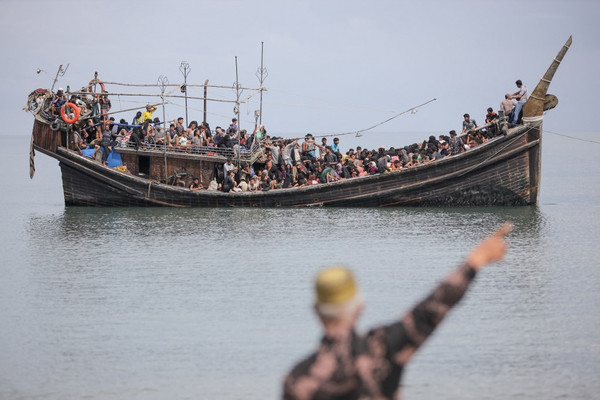In the quiet waters of Southeast Asia, a crisis unfolds largely outside the global spotlight. The Rohingya, a predominantly Muslim ethnic minority from Myanmar, continue to flee persecution and violence in their homeland. Their latest destination: the shores of Indonesia's Aceh province. More than 1,000 Rohingya refugees, largely women and children, arrived here in just one week, embodying stories of unparalleled hardship, resilience, and the grave realities of survival against seemingly insurmountable odds.
The Rohingya endure systemic discrimination and statelessness despite their centuries-long presence in the region. This marginalization stems from a complex history where the Burmese government, since the late 20th century, has viewed the Rohingya as illegal immigrants from Bangladesh, despite evidence of their roots in the region dating back centuries. This narrative, coupled with nationalistic and religious biases, has fueled the discrimination. Denied citizenship and basic rights in a predominantly Buddhist Myanmar, the Rohingya face severe limitations on movement, employment, education, and healthcare, exacerbating their poverty and marginalization. This community is segregated and often subjected to human rights abuses, including arbitrary arrests and violence.

The crisis escalated in August 2017 when a brutal military crackdown in Myanmar's Rakhine State led to mass violence, killing thousands and burning entire villages. This catastrophe forced over 742,000 Rohingya to flee, primarily to Cox's Bazar in Bangladesh, home to the world's largest refugee camp. As of 2023, more than 960,000 Rohingya reside there, over half of them being women and children.
In Bangladesh, the Rohingya face another set of challenges: overcrowding, limited resources, and the vulnerability of their makeshift shelters to natural disasters like the recent Cyclone Mocha exacerbate their plight. The cyclone, which hit in May 2023, affected 2.3 million people, including 930,000 Rohingya refugees, further highlighting their precarious living conditions. The UNHCR and other agencies strive to provide essential services, but underfunding and logistical challenges persist.
The recent arrivals in Aceh underline the ongoing desperation of the Rohingya. They undertake perilous journeys across the sea, often in flimsy boats, seeking safety and a semblance of a dignified life. Their journey to Aceh is a microcosm of a broader saga faced by nearly a million Rohingya living in sprawling camps in Bangladesh, described as the world's largest humanitarian refugee crisis by the UNHCR. This mass exodus, primarily women and children, reflects the dire circumstances from which they escape and their relentless pursuit of safety.
In Aceh, their arrival has stretched local facilities to their limits. The UNHCR and local officials are striving to meet basic needs, as many refugees have spent days adrift at sea. Yet, their future remains uncertain in a country that is not a signatory to the UN refugee convention, acknowledging neither obligation nor capacity to accommodate refugees permanently. Indonesia is only a temporary sanctuary for the Rohingya, where they are held in a balance of geopolitical and humanitarian considerations.
Indonesia's response, while commendable in its humanitarian aspects, also reflects the broader dilemma faced by many countries grappling with refugee influxes.The Indonesian Ministry of Foreign Affairs has underscored the irony in the situation where, despite not being a signatory to the 1951 Refugee Convention and thus having no obligation or capacity to accept refugees, Indonesia has been more accommodating than many nations that have actually signed the Convention. This observation highlights the gap between policy commitments and on-the-ground realities in refugee crises.
The Acehnese community's response to the Rohingya refugees highlights the challenges of integrating displaced populations. Initially, Acehnese fishermen and villagers exhibited overwhelming support, driven by socio-religious norms and gratitude for the global aid received during the 2004 tsunami. However, this empathy was tempered by concerns over resources and security, as some residents feared refugees escaping from camps and adding strain. To address these challenges, local politicians and NGOs initiated non-salaried employment programs, attempting to balance humanitarian solidarity with pragmatic concerns about integration and community resources.
The plight of the Rohingya is not just a regional issue; it is a test of our global moral fabric. It calls for an urgent and coordinated international response that goes beyond temporary relief. We must address the root causes of this crisis in Myanmar and ensure the protection and rights of the Rohingya wherever they find refuge. As the world grapples with numerous challenges, the Rohingya crisis demands our attention and action. It's a stark reminder of the human costs of political failure and social injustice.

